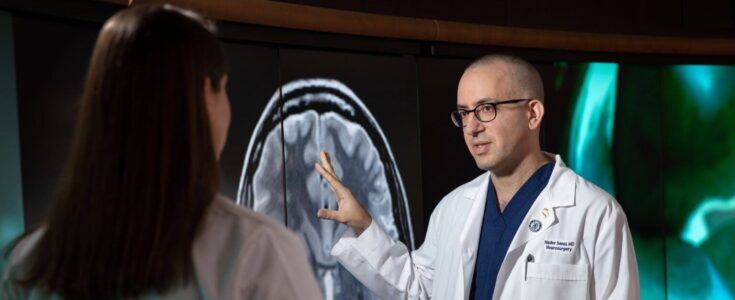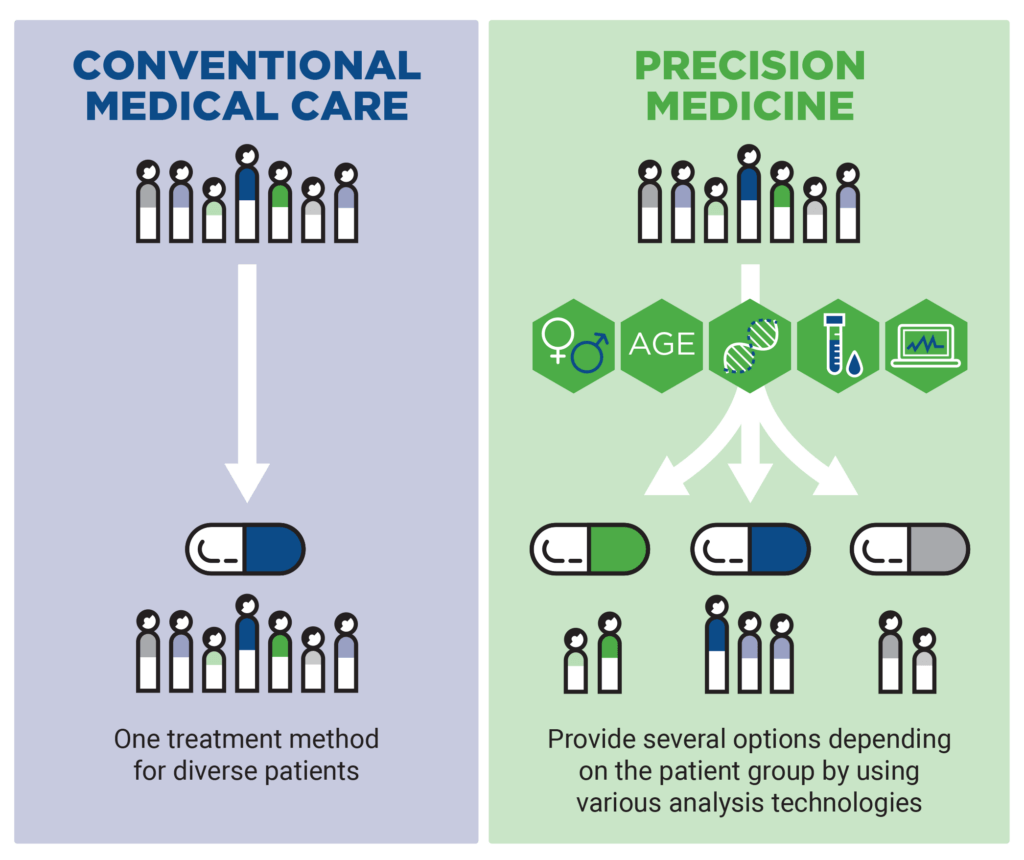
Ivy Blog
Beyond the Headlines: Navigating New Brain Tumor Research
- January 9, 2024
- Ivy Center
- Posted in Patient Support

A quick Google search reveals many treatment options for brain tumors, from FDA-approved drugs to an electrical-field wearable device to cryotherapy. As new brain tumor treatments are introduced, patients can feel lost in the latest news and worry that they’re not keeping up with the newest therapies.
To address those concerns and arm patients with the tools to discern the news on their own, Dr. Nader Sanai, director of the Ivy Brain Tumor Center and director of Neurosurgical Oncology at Barrow Neurological Institute, spoke directly with patients and caregivers at the American Brain Tumor Association’s 2023 National Conference in Chicago.
“My job in this talk is to equip you so that you can navigate yourself through all of the unknowns,” he said.
In his presentation, “Advancing Brain Tumor Treatment Through Clinical Research,” Dr. Sanai provided an overview of several new therapies for brain tumors. As one of the country’s busiest neurosurgical oncologists, Dr. Sanai often receives questions from his patients about new brain tumor treatments.
“You’re going to have to develop some sort of toolkit in order to sort through fact versus fiction and what it means for you and your loved ones directly,” he said.
Here are Dr. Sanai’s tips for sifting through new research:
- Find a doctor who you trust – your doctor is your representative, patients should trust their doctor to make decisions on their behalf.
- There are no secretly successful new therapies – this community of patients and caregivers will know instantly if a new treatment is working and might be able to help them.
- The newer the therapy, the more unknowns – when it comes to experimental therapies, physicians and investigators have just as many questions as patients do, know the risks and potential benefits.
- Trust the data more than the narrative – the data is what matters, ask what evidence is there that this treatment has worked in other patients.
- Research bias is eliminated by randomization – randomized studies are the gold standard in our field of clinical research. These studies give clinicians a high degree of certainty that this therapy is going to help patients.
Clinical Research is the Way
Understanding the language of clinical research is part of the challenge for patients. Certain scientific terms can be difficult to decipher, such as discovery research, which refers to testing new therapies in the lab and in animal models, or translational research, meaning incorporating those findings discovered in the lab into the clinic. Dr. Sanai also stated that animal models aren’t always a good predictor of how a drug will perform in humans.
Clinical research is clearly the way to get better results, Dr. Sanai said. At the Ivy Brain Tumor Center, Phase 0 clinical trials provide insightful information about the effectiveness of an experimental drug. Pharmacokinetic and pharmacodynamic-triggered studies test whether the drug is capable of crossing the blood-brain barrier and penetrating the brain tumor. The task of bypassing the blood-brain barrier is the perpetual problem in brain tumor treatment, Dr. Sanai said.

New therapies on the horizon
In his presentation, Dr. Sanai reviews some treatments currently being tested such as targeted therapies, immunotherapy, T-cell therapy and cancer vaccines and viral therapies.

Radiation sensitizers, like niraparib, are showing promise in early phase trials. The Ivy Center is testing drug-device combinations like sonodynamic therapy, a targeted ultrasound and drug combination. A drug-delivery technique called superselective intra-arterial infusion is also being investigated as a method to deliver a drug directly to the tumor, bypassing the blood-brain barrier. One of the most difficult challenges in brain cancer treatment is getting sufficient levels of the drug across the blood-brain barrier and into the brain.
Dr. Sanai is often asked why there aren’t better, more effective treatments for brain cancer. In his presentation, he addressed the challenges that investigators face in drug development for brain cancer.
Glioblastoma is a formidable foe
Each glioblastoma brain tumor is genetically diverse and no two are alike. Glioblastoma is an incredibly complex tumor, Dr. Sanai said.
As a neurosurgeon, Dr. Sanai can remove tumors completely but that work is often undone by the unrelenting nature of brain tumors, as they often return.
“This is arguably the most complex cancer known to man,” he said.
Other cancers have seen great gains in survivorship, partly due to market size and funding. Brain and central nervous system cancers, unfortunately, don’t get the attention and funding they desperately need.
With more education and awareness, and the new therapies currently being studied, those fighting brain cancer will have many more options for treatment.
